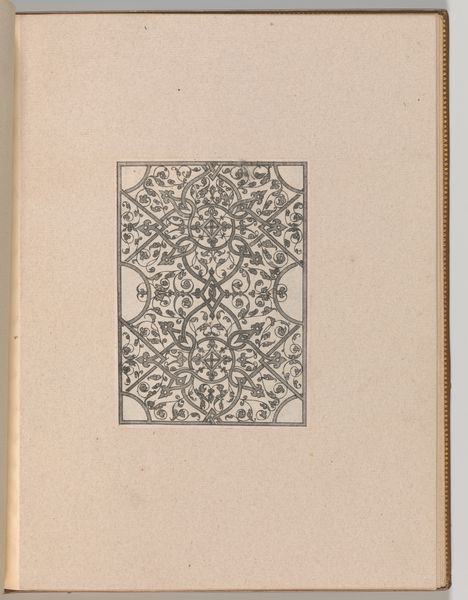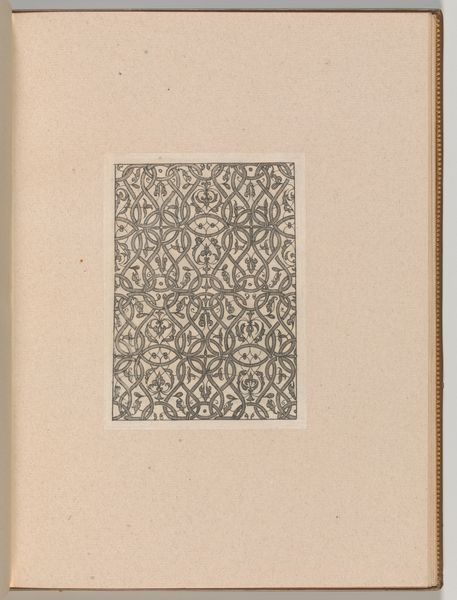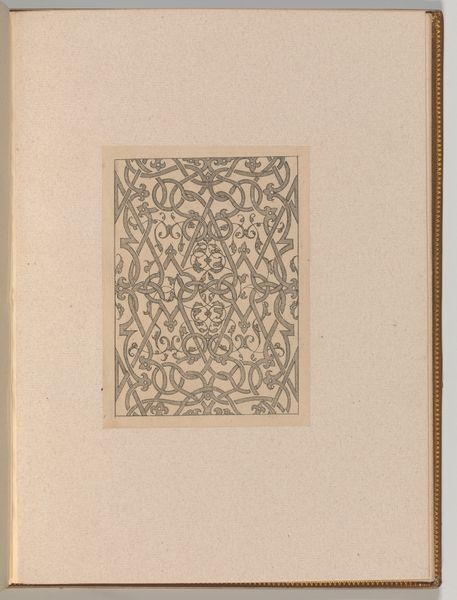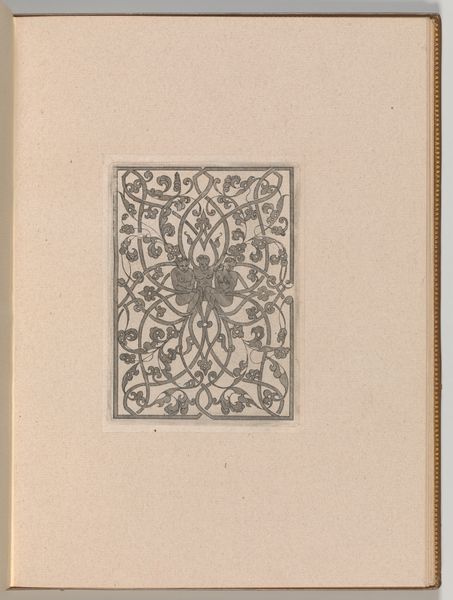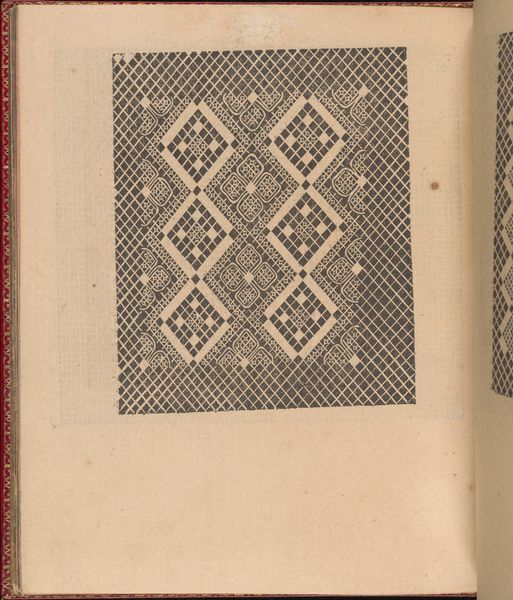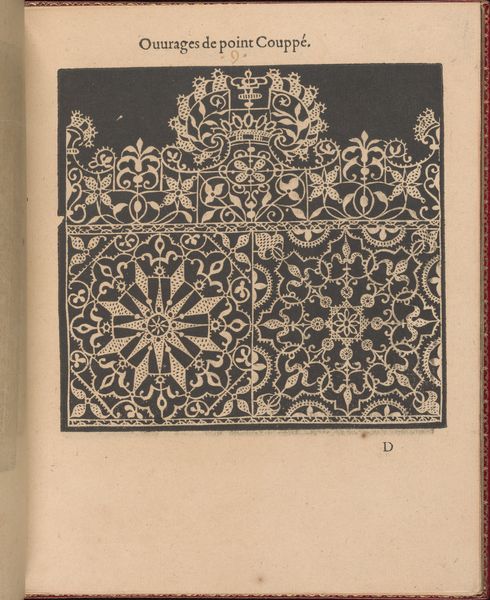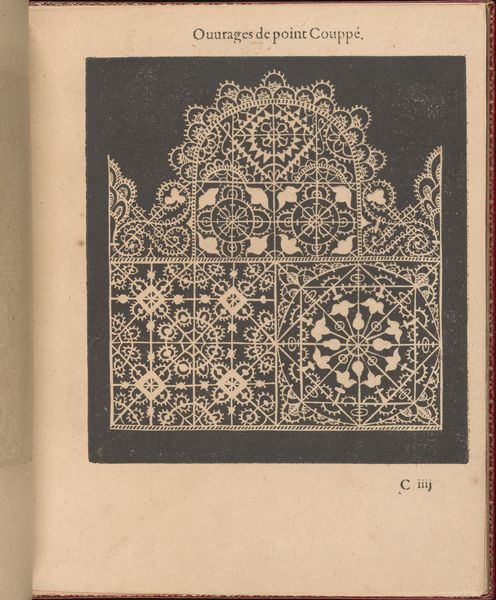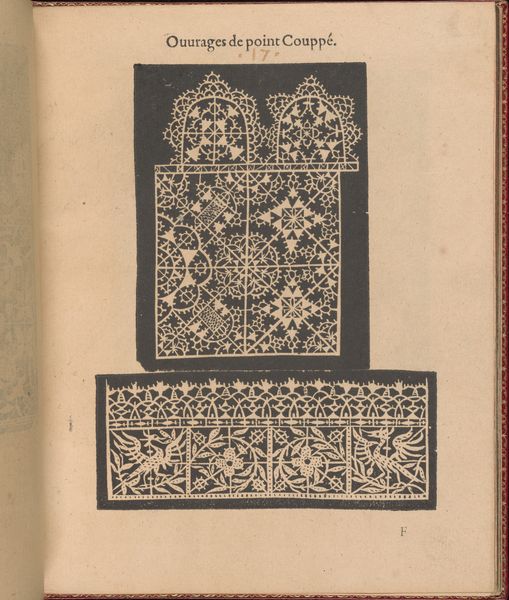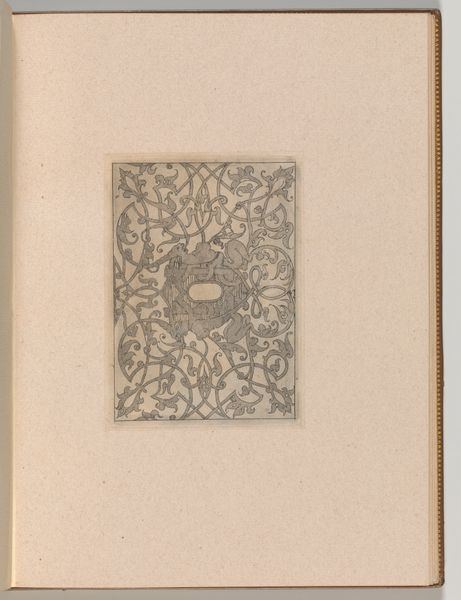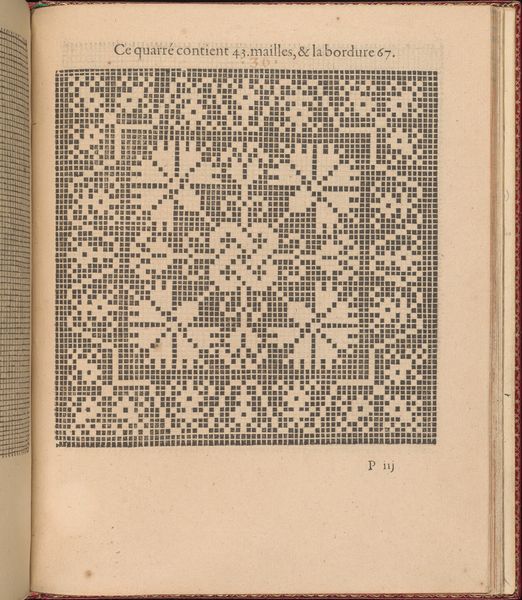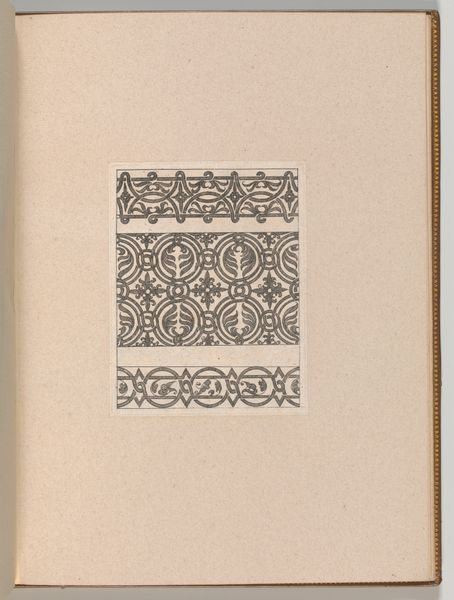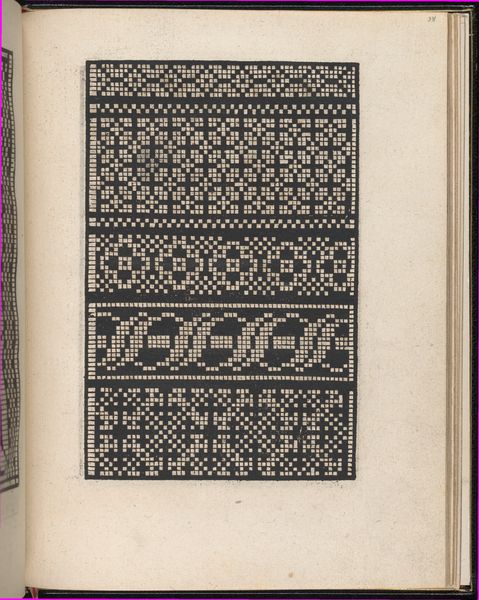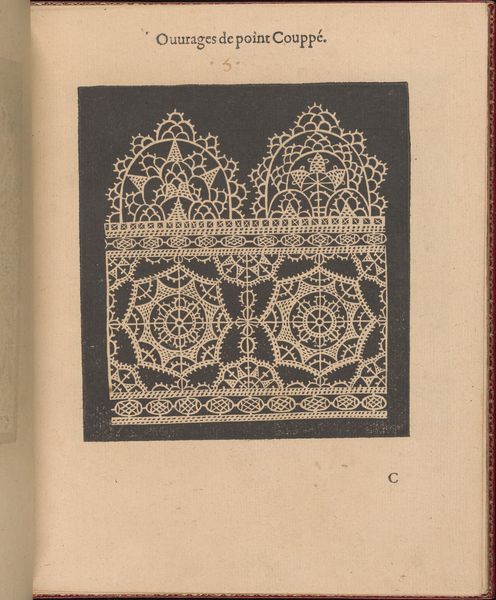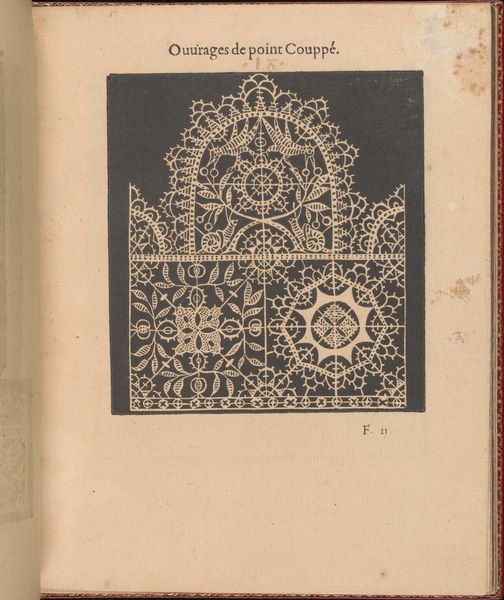
Copies after the 'Livre contenant passement de moresques' (plate 10) 1800 - 1900
0:00
0:00
drawing, print, engraving
#
drawing
# print
#
geometric
#
islamic-art
#
decorative-art
#
engraving
Dimensions: Sheet: 4 13/16 × 3 9/16 in. (12.2 × 9 cm) Plate: 4 1/2 × 3 5/16 in. (11.5 × 8.4 cm) Overall: 10 1/16 × 7 7/8 in. (25.5 × 20 cm)
Copyright: Public Domain
Jacques Androuet Du Cerceau made this engraving, Copies after the 'Livre contenant passement de moresques,' sometime in the 16th century. In it, we see what was considered at the time to be Moorish design. The visual codes used here, such as the geometric patterns and arabesque forms, were popular in Islamic art and architecture. They became highly sought after in Europe during the Renaissance as exotic and luxurious motifs. France, where Du Cerceau worked, was very interested in this kind of cultural appropriation. This interest was partly fuelled by political and economic competition with the Islamic world. So, the artwork reflects a complex relationship of admiration, appropriation, and rivalry. To understand this print fully, one might research the history of ornament, the circulation of design patterns, and the political dynamics between Europe and the Islamic world during the Renaissance. The meaning of this print isn't fixed. It shifts with historical context.
Comments
No comments
Be the first to comment and join the conversation on the ultimate creative platform.
